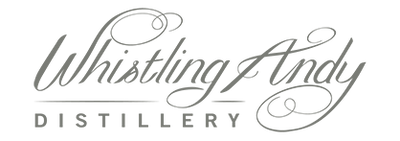Montana is home to many unique and beautiful sights, including one of the tallest free-standing brick structures anywhere in the world: the Anaconda Smelter Stack.
Built by the Anaconda Copper Company, this brick structure has become a well-known landmark visited by thousands of people each year. It is so large that the entire Washington Monument could fit comfortably inside of it.
This monument is so famous that Montana named a state park after it: the Anaconda Smokestack State Park. Located in Anaconda, Montana, the park is about an hour and twenty minutes outside of Helena.

A brief history of this masonry feat
Construction started on the Anaconda Smelter Stack in 1918 and was finished a year later in 1919. It stands 585 feet tall. The structure is 75 feet in diameter at the base and tapers to a diameter of 60 feet. To keep the structure safe, it was equipped with a lightning protection system.
An impressive architectural design, the stack was meant to discharge gases created by the numerous smelting and roasting furnaces within. Combined with the exhaust flues, the stack was capable of carrying between 3 and 4 million cubic feet of exhaust gas per minute.
The stack opened for business on May 4, 1919. Many considered this day to be a monumental occasion as dark plumes of smoke floated into the skies. Anaconda Copper Company and its newest smelter stack were considered monuments to industrialism. Even today, it’s a reminder of the large-scale mining operations that once dominated the area.
The Anaconda Copper Company
The Anaconda Copper Company dominated the area in the 1900s and drove much of the economy in the region. It was one of the largest mining operations in the world during its time. Initially, the company focused on producing copper, later shifting to other metals like silver, aluminum, and uranium.
Irish immigrant Marcus Daly, one of three “Copper Kings”, founded this company in 1880 along with a group of investors from California. The company quickly found success with its first copper mine in Butte, Montana. Later, the company expanded its hold overseas, owning and operating mines in Chile.
Fun Fact: Daly originally wanted to name the settlement Copperopolis, but the name was already taken.
It was this international shift that eventually led to the company’s downfall in the 1980s. The financial stress of its overseas operation combined with declining copper prices drove the company to start closing mines and plants.

With progress comes pollution
As impressed as those in the area were at the time with this momentous new stack, it started spewing toxic waste into the land, water, and air from its very first day in operation.
After the site was closed in 1981, a community group rallied to save it. The stack and the surrounding 300 square miles were named a Superfund site in 1983. It’s still undergoing a rigorous cleanup process today.
Many additional buildings and facilities used to surround the Anaconda Smelter Stack, all of which were torn down decades ago. Visitors to the site can see how deep some of the holes being dug as part of the cleanup effort are, a show of just how widespread the contamination of heavy metals was.
Members of the general public were forbidden from visiting the site for nearly forty years because of the heavy metal contamination. It recently opened for tours in 2018 to celebrate the stack’s 100th anniversary.
Cleaning up the Anaconda Smelter Stack
Getting the stack named a Superfund site was just the beginning of the effort to undo nearly a century of damage copper mining left behind.
The entire effort, which includes cleaning the soil, is estimated to cost $83 million. Those who grew up in the area, many of whom held summer jobs at the stack to pay for college, are glad of the efforts to make the site clean and keep it accessible to the public.

Visiting the Anaconda Smelter Stack
The site is open to the public, though with some restrictions. Because the site and surrounding land are still in the process of being cleaned of the toxic heavy metal waste, the stack itself can’t be accessed or toured.
Those who visit will marvel at the massive concrete base and what remains of the terra cotta coating. Of course, the views of the serene countryside surrounding the stack are another reason to make the drive. Visitors can also stop by the Copper Village Museum and Arts Center, located in City Hall, to learn more about the history of smelting and copper mining.





